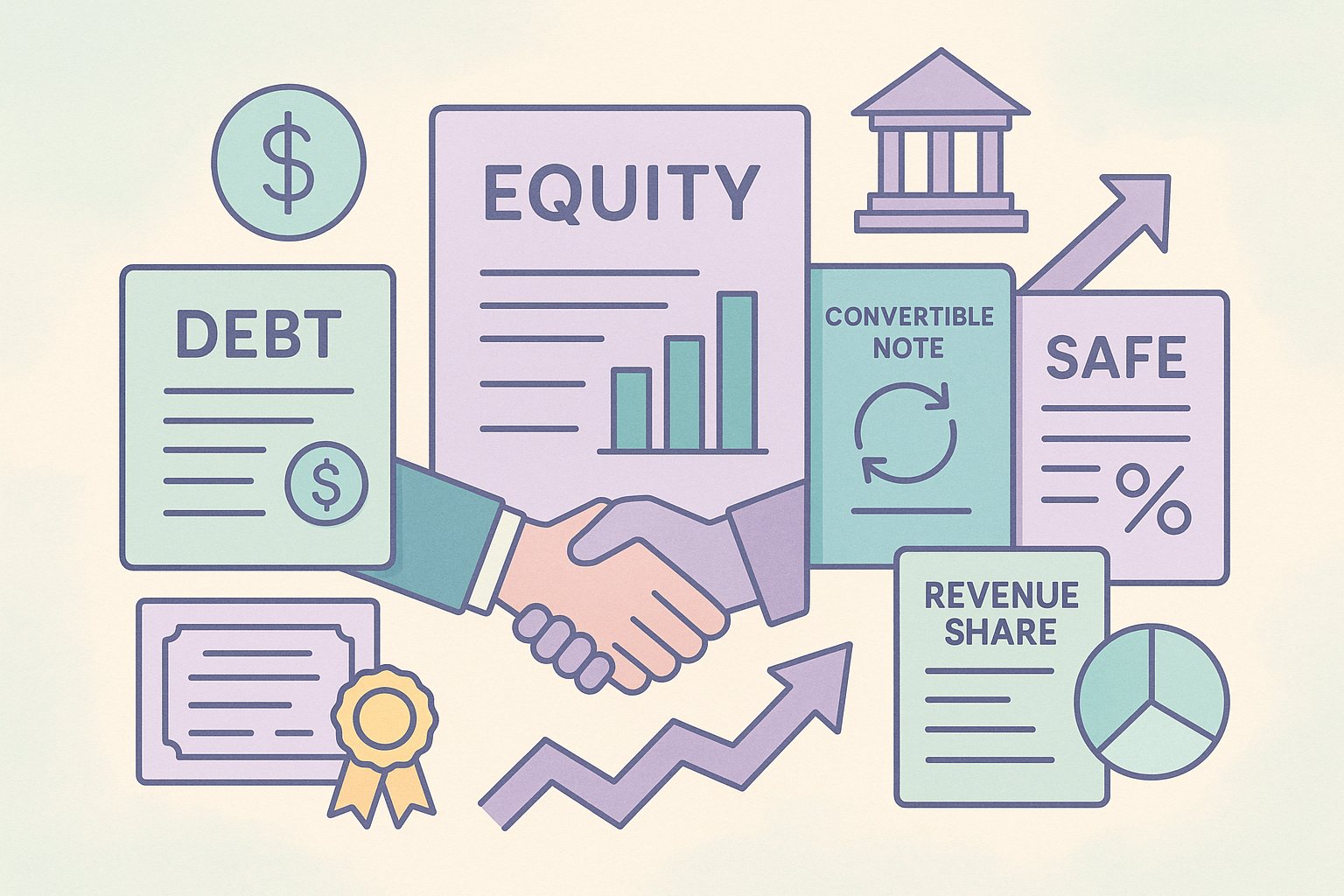Navigating the Early Equity Investing Maze
Embarking on the journey of equity investing can feel like stepping onto a bustling trading floor for the first time—thrilling, full of promise, and brimming with potential pitfalls. New investors often arrive eager to chase the next breakout startup or hot industry trend, armed with optimism and a modest war chest. Yet without a seasoned guide, they can find themselves veering off course, tripping over common missteps that erode returns and shake confidence. Successful equity investing demands more than capital; it requires disciplined research, strategic portfolio design, emotional resilience, and an appreciation for the long game. In this comprehensive exploration, we’ll shine a spotlight on the most frequent errors newcomers make—from inadequate due diligence and overconcentration to emotional decisions and tax blind spots. By unpacking these missteps and illustrating how to sidestep them, we aim to equip investors at every stage with the insights and frameworks necessary to chart a more secure, rewarding course through the complex world of equity markets.
When Due Diligence Falls Short: The Danger of Surface-Level Research
One of the gravest mistakes new equity investors commit is mistaking a compelling headline for a rigorous investment thesis. Scrolling through press articles, social media buzz, or platform summaries can spark enthusiasm, but relying solely on these sources can leave critical blind spots. True due diligence requires delving into a company’s financial statements, understanding revenue drivers, examining competitive positioning, and evaluating management track records. A startup might boast viral user growth but burn through cash at an untenable rate, or a public company could enjoy transient earnings boosts while hiding long-term liabilities in footnotes. Investors who skip these deeper analyses risk backing ventures with unsustainable economics or hidden legal entanglements. The antidote lies in structured research—creating checklists that cover market size, unit economics, regulatory environment, and leadership experience, and then seeking primary documents such as audited financials, regulatory filings, and customer testimonials to validate or refute initial impressions.
The Perils of Putting All Eggs in One Basket: Overconcentration Risk
Diversification is a foundational principle in portfolio management, yet many neophyte investors misunderstand what it truly entails. It’s insufficient to merely hold stocks in different industries; one must also consider company stages, geographies, and risk profiles. Overloading on a single sector—say, technology or biotech—can amplify vulnerability to sector-specific downturns, regulatory clampdowns, or cyclicality. Similarly, anchoring too heavily in a handful of “favorite” companies, especially early-stage startups, can lead to devastating loss if those ventures falter. Effective diversification balances concentration and breadth, allocating across asset classes and within equities spreading capital among large-cap, mid-cap, small-cap, and private placements where suitable. This approach smooths volatility and increases the likelihood that strong performers will outweigh weaker ones over time. Thoughtful investors set clear allocation bands—perhaps 5 to 10 percent per position—while reserving a portion of capital for opportunistic follow-on investments or new trends that emerge.
Chasing the Hype: The High Cost of Herd Mentality
The fear of missing out (FOMO) is a formidable force in equity markets. When a company’s stock soars amid media fervor or a startup round closes in minutes, newcomers may rush to invest at peak valuations, convinced that momentum will carry them ever higher. Yet chasing hype often means buying at inflated prices, only to endure painful corrections when reality catches up to sentiment. History is littered with examples—from dot-com era glamour plays to crypto winter capricious spikes—where investors rushed in at euphoric highs, only to incur deep losses. A more disciplined approach involves adhering to valuation frameworks rather than emotion-driven impulses. Whether using discounted cash flow models for public stocks or valuation cap comparisons in crowdfunding, investors benefit from grounding decisions in quantitative assessments. Setting pre-defined entry criteria—such as maximum price-to-earnings ratios or acceptable discount multiples—can act as a brake on herd-driven purchases and preserve capital for truly attractive opportunities.
Ignoring Valuation: When ‘Cheap’ Isn’t Always a Bargain
On the flip side of chasing overpriced assets, some newcomers obsess over finding “undervalued” gems without understanding why they trade at low multiples. A rock-bottom price-to-earnings ratio might signal deep value, but it can also reflect structural decline, poor management, or deteriorating industry fundamentals. Similarly, in the private equity and crowdfunding context, low valuation caps can lure investors into startups with unproven business models or unsustainable unit economics. True value investing demands a layered analysis: dissecting balance sheets to ensure assets are real and liabilities manageable, stress-testing revenue forecasts, and examining competitive moats that protect future earnings. Cheap looks only cheap until a deeper dive reveals hidden risks. By marrying valuation metrics with qualitative factors—management quality, product-market fit, regulatory outlook—investors can differentiate between bargains and value traps, allocating capital to companies with both attractive valuations and solid prospects.
Sloppy Portfolio Tracking: The Hidden Toll of Unorganized Records
As portfolios expand beyond a handful of positions, keeping track of holdings, cost bases, tax lots, dividend dates, and follow-on opportunities becomes a formidable task. Many new investors rely on memory or disparate brokerage statements, leading to missed capital calls, forgotten vesting schedules, or inaccurate performance assessments. The resulting confusion can erode returns, generate tax complications, and amplify stress. A robust tracking system—whether a tailored spreadsheet or dedicated portfolio management software—ensures comprehensive visibility. Key elements include per-position entries for purchase date, quantity, cost basis, current market value, target price, and notes on upcoming events such as earnings reports or funding rounds. Integrating automated data feeds, calendar reminders for critical dates, and regular reconciliations between actual performance and target allocations empowers investors to maintain discipline, keep portfolio drift in check, and seize timely adjustments when market or company developments warrant.
Emotional Investing: When Gut Feelings Overrule Strategy
Perhaps the most insidious pitfall for new equity investors is succumbing to emotional decision-making. Fear and greed can trigger rash trades—selling in a panic during market dips or doubling down at euphoric peaks. Cognitive biases, such as anchoring on past purchase prices or confirmation bias favoring supporting evidence, further distort judgment. To counteract these tendencies, investors must codify their strategies in written plans and adhere to them through market gyrations. Predefined rules for entry and exit, stop-loss thresholds, and rebalancing schedules act as guardrails against impulsive moves. Moreover, periodic “investor check-ins”—quiet times to review portfolio rationales, market context, and emotional state—help cultivate self-awareness and reinforce analytical discipline. Over time, this disciplined approach reduces the impact of emotional whipsawing, preserving capital and aligning actions with long-term objectives rather than short-term sentiments.
Neglecting Follow-On Rights: Giving Up the Power to Protect Your Stake
Many equity crowdfunding and private placements come with pro rata or preemptive rights—entitling investors to participate in subsequent funding rounds and maintain their ownership percentage. New investors often overlook these rights, either unaware of their existence or lacking the processes to act swiftly when follow-on windows open. The consequence? Unintentional dilution, reduced influence, and smaller slices of future upside. To prevent this, investors should meticulously review offering documents at the outset, noting any rights of first refusal or pro rata entitlements. Maintaining organized records—detailed in your tracking dashboard—ensures prompt notification when issuers schedule follow-on rounds. By participating to preserve ownership stakes, investors safeguard their position to benefit from future valuation increases and preserve voting power in governance decisions.
Underestimating Illiquidity: When Capital Gets Locked Up
Equity investments, especially in private markets and crowdfunding deals, lack the liquidity of public stocks. Shares may be subject to multi-year lockup periods, lack secondary markets, or carry transfer restrictions that prevent easy sales. New investors often fail to appreciate how quickly capital can become inaccessible, leading to cash flow shortfalls or an inability to pivot when market conditions change. A prudent approach requires allocating only a portion of one’s portfolio—capital earmarked specifically for illiquid bets—while maintaining liquid reserves to handle emergencies and seize public market opportunities. Additionally, exploring platforms or arrangements that offer secondary trading windows, drag-along rights, or buyback provisions can provide occasional liquidity lifelines. By treating private equity stakes as long-term commitments and planning liquidity needs accordingly, investors avoid being trapped when unforeseen expenses or market downturns arise.
Overlooking Tax Strategies: The Cost of Poor Planning
Equity investing carries complex tax implications—ranging from short- and long-term capital gains rates to specific treatments for qualified small business stock (QSBS), stock options, and foreign investments. New investors frequently neglect consultation with tax professionals, resulting in unexpected liabilities, missed credits, and filing headaches. For example, holding QSBS for five years can yield significant tax exclusions, while early exercise of options may trigger preferable tax treatments. Failure to understand wash-sale rules or accurate lot accounting can invalidate loss harvesting strategies. Integrating tax planning into your investment workflow—maintaining meticulous transaction records, consulting advisors on entity-structure implications, and timing sales strategically—ensures that returns are preserved rather than eroded by avoidable tax bills. This integrated approach transforms what could be a burdensome afterthought into a lever for optimizing net returns.
Skipping Post-Investment Engagement: The Cost of Passive Neglect
After the excitement of deploying capital, many investors lapse into passivity—failing to engage with management teams, neglecting investor updates, and missing opportunities to add value or influence strategy. This hands-off stance can leave founders under-informed or under-resourced, slowing growth trajectories and souring relationships. Engaged investors—from providing introductions and mentorship to sharing market insights—enhance a startup’s prospects and often receive preferential access to future deals and deeper strategic visibility. Even in public equities, shareholders benefit from monitoring proxy statements, participating in governance votes, and engaging with investor relations. By carving out time for constructive engagement—whether attending quarterly earnings calls, joining advisory boards, or offering domain expertise—investors become active partners in value creation rather than distant bystanders.
Ignoring Market Cycles: Misaligning Time Horizons
Equity markets move in cycles—bull runs laced with exuberance, bear phases punctuated by fear, and periods of sideways consolidation. New investors often enter near market peaks, only to see valuations contract and patience tested. Conversely, fear-driven exits in bear markets can lock in losses just before recoveries. Defining an investment time horizon—five, ten, or twenty years—and aligning asset choices with that timeline is crucial. Long-term investors can weather interim volatility in pursuit of compounding growth, while short-term traders require different tactics and risk buffers. A clear horizon also informs allocation decisions: stable blue-chip equities may suit conservative mandates, while early-stage ventures demand a greater risk appetite. By consciously matching strategies to market cycles and personal timelines, investors avoid the pitfalls of cycle-driven mistakes and maintain focus on enduring objectives.
Transforming Missteps into Mastery
Equity investing is as much an art as it is a science, requiring both analytical rigor and disciplined temperament. New investors inevitably stumble, whether due to surface-level research, concentration errors, emotional impulses, or tax oversights. Yet each misstep offers a lesson—a chance to refine processes, fortify frameworks, and deepen market understanding. By acknowledging these common pitfalls and adopting proactive countermeasures—structured due diligence, robust portfolio tracking, emotional self-regulation, and ongoing engagement—investors elevate their craft and set the stage for more consistent, rewarding outcomes. Remember, successful equity investing is a marathon, not a sprint; it’s built on the compounding power of steady improvements and informed decisions rather than miraculous market calls. Armed with these insights, both novices and seasoned backers can navigate the evolving equity landscape with confidence, resilience, and the strategic foresight to unlock long-term value.




